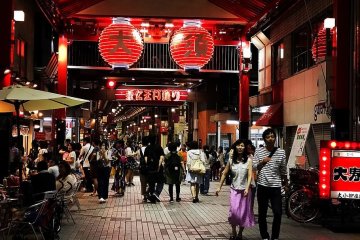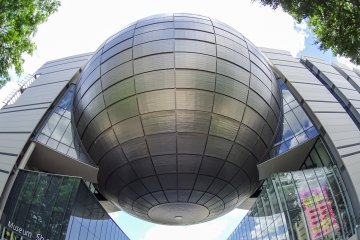

Atsuta Jingu (Atsuta Shrine), also known as Atsuta Sama (Venerable Atsuta) or Miya (the Sanctuary), has been one of the most significant centers of worship in Japan since ancient times. Visitors to the shrine, including those who conventionally visit the New Year practice count up to nine million annually.
The revered deity of the shrine is Amaterasu-Oomikami, represented by the holy sword Kusanagi-no-tsurugi, one of the three sacred treasures that symbolize the imperial throne.
Tradition has it that this mighty God, through the divine decree of the Creator God Amatsu-mioya-no-Mikoto (God of the Heavenly Father), entered the world for the first time on the path of the gods and blessed humanity with the virtue of love.
3-minute walk from Meitetsu Railways Jingumae Station; 8-minute walk from JR Atsuta Station; a short walk from Meijo Line subway, Jingu Nishi station; Easily accessed by car, the shrine offers free parking on the East side entrance, near the Meitetsu station.

At the shopping districts near Osu Kannon Temple, there are two main shopping arcade streets: Niomon Dori and Banshoji Dori. The shopping district carries wares that make it comparable to Akihabara of Tokyo—with computer parts, costumes, figures, and games being commonly found. The area is also known for its fashion, food shops, recycle or second-hand stores, and electronic stores. There seems to be a little bit of everything in the Osu shopping arcade. If you’ve ever wanted to see a combination of Akihabara, Ginza, and Harajuku then you’ll be delighted with what you find in these streets. Many of the stores in the shopping arcade also offer a tax-free service, making this a great place to find souvenirs and big-ticket items you want to take home. The shops generally open around 11 am and close at 8 pm.

The temple Kitanosan Shinpuku-ji Hosho-in in Nagoya, Aichi, is commonly known as Osu Kannon. The temple was originally built in 1333 in Gifu Prefecture, however, due to repeated flooding, it was moved to its present location in 1612 by Tokugawa Ieyasu. Today, the main hall is decorated with a large red paper lantern steadied with wires from its base; worshippers tie their wishes to these wires in hopes that they’ll be granted. An antique fair is also held on the temple grounds on the 18th and 28th of every month. The temple is also famous for its on-ground library with over 15,000 Japanese and Chinese Buddhist works. Among them is the oldest hand-written copy of the Kojiki, the earliest account of Japanese history. While worshippers flock to the grounds daily, you’ll also find flocks of pigeons—it’s a nice place to sit and admire the union of the surrounding city with the tranquility of the temple. Nearby visitors can also enjoy the Osu Shopping Arcade.

The Nagoya City Science Museum is a museum located in Sakae, Nagoya, the center of Nagoya City, in central Japan. The museum houses the largest planetarium in the world and has three main sections on modern technology, life sciences and general science with a variety of hands-on exhibits. [Wikipedia]